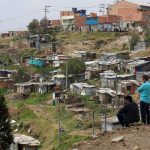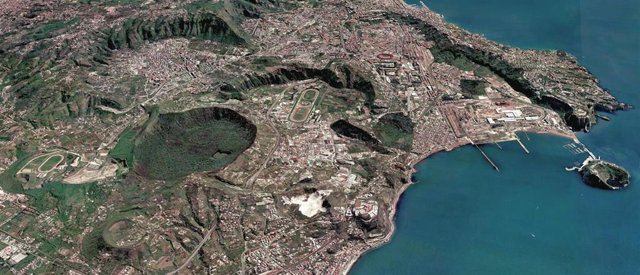June 9 () –
Phlegrean Fields, a vast volcanic caldera northwest of Naples most of which is under water, has become weaker and prone to rupturemaking an eruption more likely.
This is the conclusion of a new study carried out by researchers from UCL (University College London) and the Italian National Research Institute for Geophysics and Volcanology (INGV).
The volcano, which last erupted in 1538, has been unsettled for more than 70 years, with two-year peaks of unrest in the 1950s, 1970s and 1980s, and a slower phase of unrest over the past decade. . Tens of thousands of small earthquakes have occurred during these periods and the coastal town of Pozzuoli has risen almost 4 meters, about the height of a double-decker bus.
The new study, published in the journal Nature’s Communications Earth & Environment, used a volcanic fracture model, developed at UCL, to interpret ground uplift and earthquake patterns, and concluded that parts of the volcano had stretched almost to the point of rupture.
Lead author Professor Christopher Kilburn said: “Our new study confirms that Phlegrean Fields is approaching rupture. However, this does not mean that an eruption is guaranteed. The rupture may open a rift through the crust, but the magma still needs to push up in the right place for an eruption to occur.
“This is the first time we have applied our model, which is based on the physics of how rocks break, in real time to any volcano. Our first use of the model was in 2017 and since then, Phlegrean Fields has behaved as we predicted, with an increasing number of small earthquakes indicating pressure from below..
“We will now have to adjust our procedures to estimate the chances that new routes will open up for magma or gas to reach the surface. The study is the first of its kind to forecast the rupture of an active volcano.” a step change in our goal of improving eruption forecasts around the world.”
Campos Flegreos is not an obvious volcano because, instead of becoming a traditional mountain, it is shaped like a smooth depression 12-14 km wide, and is therefore known as a caldera. This explains why 360,000 people now live on it.
Over the past decade, the ground below Pozzuoli has been creeping upward at about 10 cm per year. Persistent small earthquakes have also been recorded for the first time since the mid-1980s. More than 600 were registered in April, the highest monthly number so far.
The disturbance has been caused by the movement of fluids some 3 km below the surface. Some of the fluids may be molten rock or magma and others may be natural volcanic gas. The latest phase of disturbances appears to be caused by magmatic gas seeping into voids in the rock, filling the 3km-thick crust like a sponge.
Earthquakes occur when faults (fissures) slide due to stretching of the crust. The 2020 earthquake pattern suggests that the rock is responding inelastically, breaking rather than bending.
In their paper, the team explained that the effect of unrest since the 1950s is cumulative, meaning that an eventual eruption could be preceded by relatively weak signals, such as a lower rate of ground uplift and fewer earthquakes. This was the case with the eruption of the Rabaul caldera in Papua New Guinea in 1994, which was preceded by small earthquakes that occurred at one-tenth the rate that had occurred during a crisis a decade earlier.
The team stressed that an eruption was not inevitable. Dr Stefano Carlino, from the Vesuvius Observatory, explained: “It’s the same for all volcanoes that have been silent for generations. Campos Phlegreos can adapt to a new routine of gentle ascent and descent, as seen at similar volcanoes around the world. world, or just go back to rest. We still can’t say for sure what will happen. The important point is to be prepared for all the results.”



![[Img #74674]](https://thelatestnews.world/wp-content/uploads/2024/12/Santiago-Ramon-y-Cajal-The-promoter-of-modern-neuroscience-150x150.jpg)








![[Img #74674]](https://thelatestnews.world/wp-content/uploads/2024/12/Santiago-Ramon-y-Cajal-The-promoter-of-modern-neuroscience-300x200.jpg)

